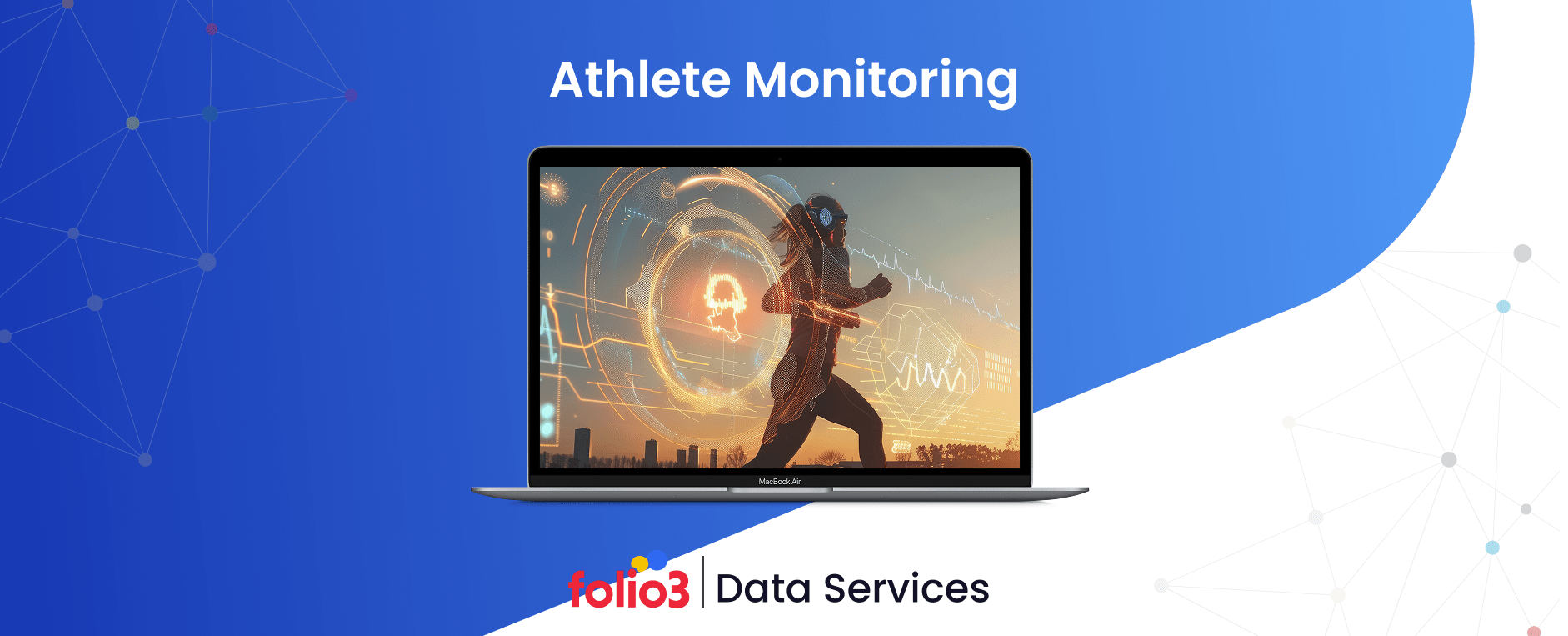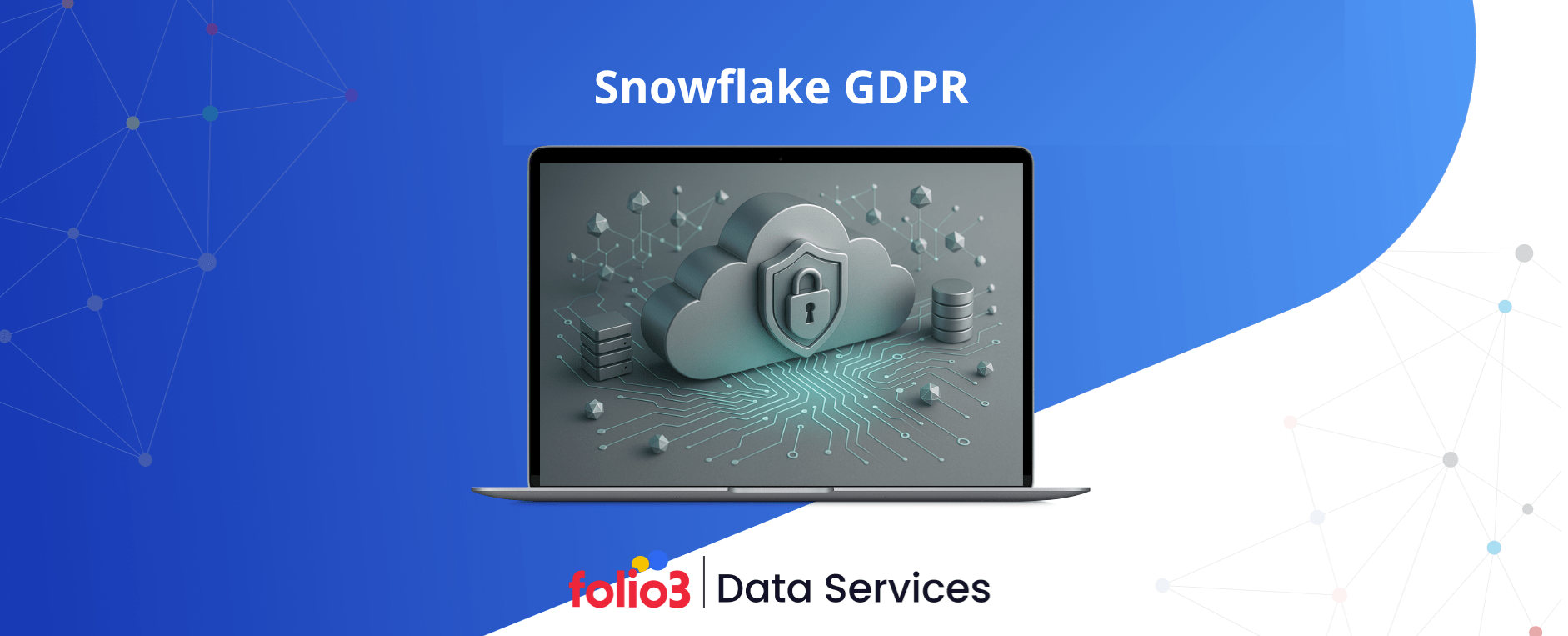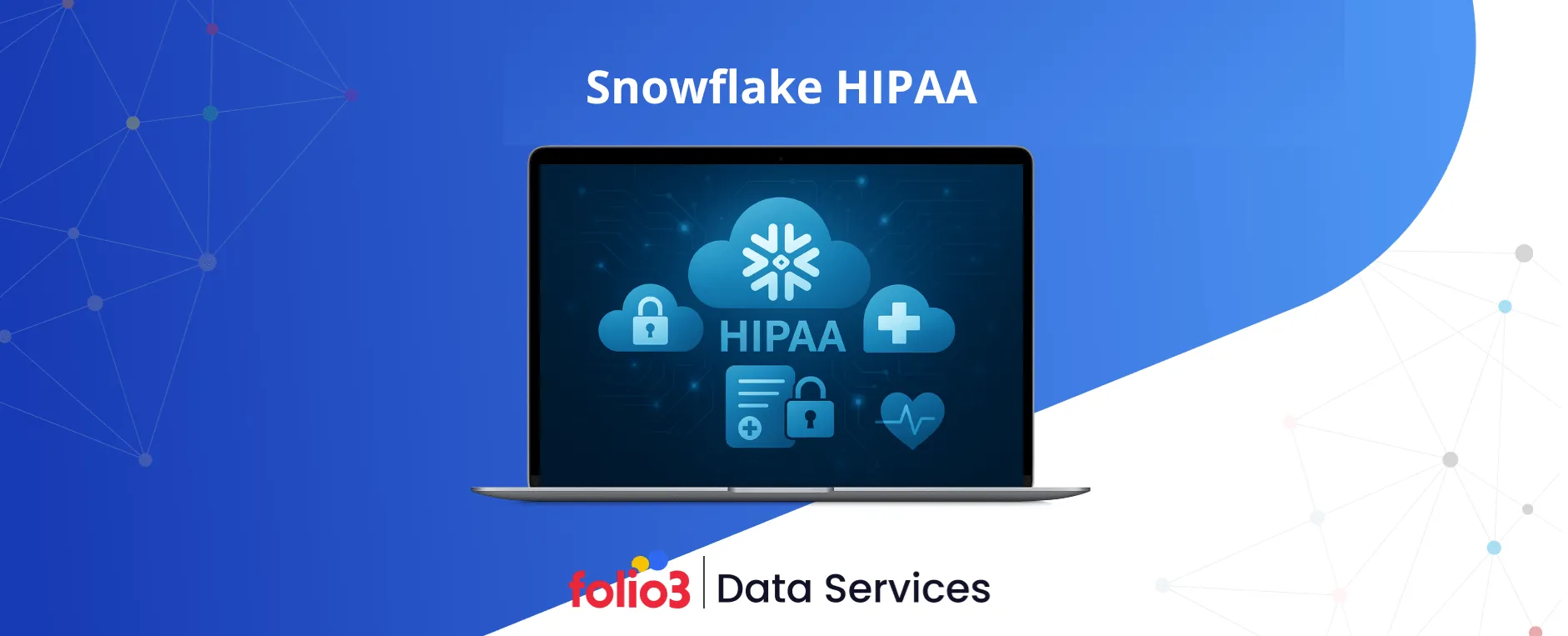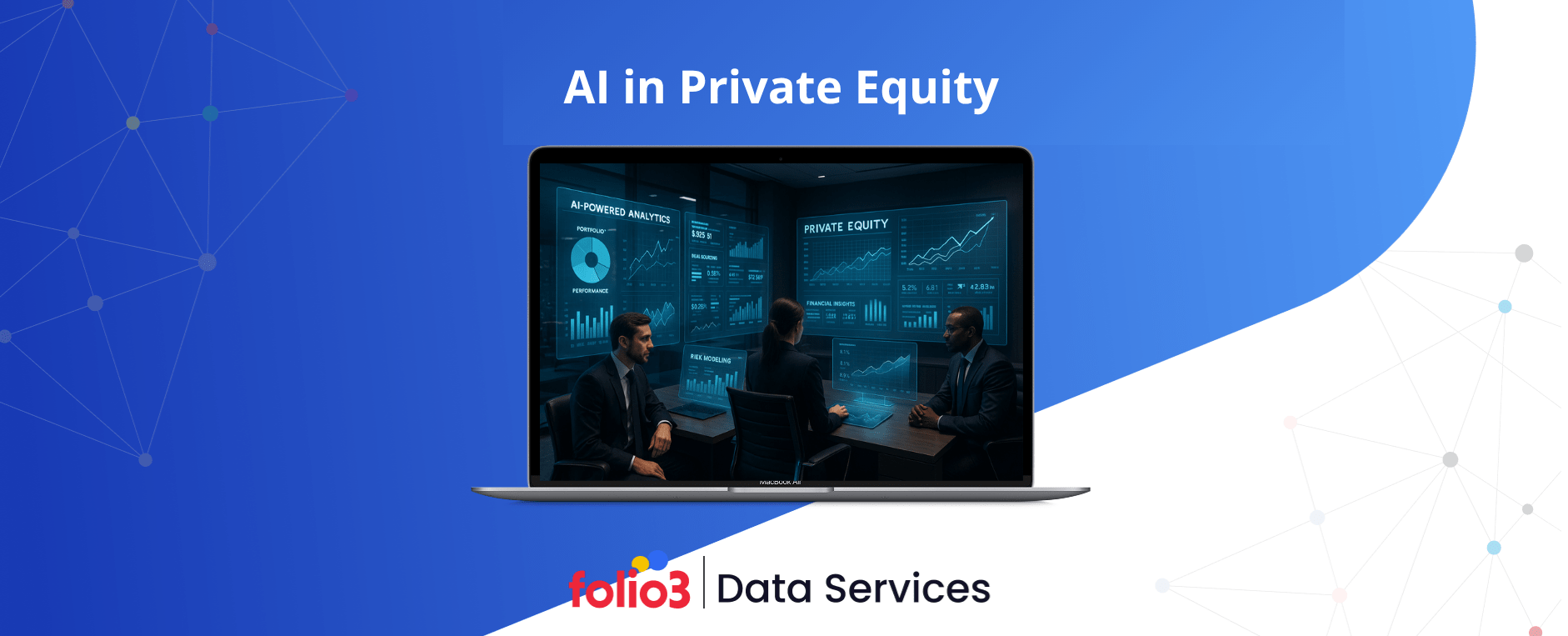Athlete monitoring has become the cornerstone of high-performance management. It’s a systematic approach that collects, analyses, and interprets data from training sessions, recovery cycles, and competitions to help coaches and performance staff make evidence-based decisions.
Once reliant on gut feeling and manual observation, modern sports now depend on sophisticated athlete monitoring systems that use sensors, GPS tracking, and real-time analytics to unlock insights never before possible. From heart rate variability and sleep quality to sprint load and movement efficiency, athlete-monitoring technology transforms raw data into actionable insights.
These innovations not only enhance individual performance but also reduce injury risk and extend athletic careers. According to a recent report, over 70% of professional sports teams now rely on athlete monitoring devices to track player readiness and recovery metrics. With integrated athlete management software, the future of sports science is clear with smarter, faster, and more personalised performance optimisation.
What is Athlete Monitoring and Why Does It Matter?
Athlete monitoring is the systematic collection and analysis of data on training loads, recovery, and performance to support evidence-based coaching decisions. Unlike basic fitness trackers, athlete monitoring systems go beyond counting steps or calories and deliver actionable insights into fatigue, injury risk, readiness, and recovery.
Modern athlete monitoring technology integrates diverse data sources, including GPS, heart rate variability, and wellness surveys, into a centralised platform. This unified view allows coaches to assess patterns over time, distinguishing between productive adaptation and accumulating fatigue.
Studies show teams using athlete monitoring devices and management software have achieved 25–35% reductions in non-contact injuries and improved training efficiency through personalised load management.
By turning raw data into actionable intelligence, athlete monitoring helps teams optimise performance peaks, prevent overtraining, and make more objective return-to-play decisions, giving them a measurable edge in today’s data-driven sports industry.
Key Components of an Athlete Monitoring System
A modern athlete monitoring system integrates multiple data streams to deliver a holistic view of performance, recovery, and overall health. By combining internal and external load metrics with wellness indicators and performance outcomes, coaches can make data-driven decisions that maximise results while minimising risk.
Internal Load Metrics
Internal load reflects how an athlete’s body responds to training stress, an essential component of athlete-monitoring technology. Heart rate data remains the cornerstone, providing insights into cardiovascular demand through zones based on maximum heart rate or lactate threshold. Heart rate variability (HRV), tracked through athlete monitoring devices, indicates recovery status and autonomic balance, which a decline often signals fatigue or illness.
Other internal metrics include the Session Rating of Perceived Exertion (sRPE), which captures an athlete’s perceived effort, and biochemical markers such as creatine kinase and testosterone-to-cortisol ratios that reveal deeper physiological strain. Sleep quality, tracked through wearables, also plays a key role in recovery and overall readiness.
External Load Metrics
External load measures the physical output of training, what the athlete did, not how their body responded. Using GPS and accelerometers, athlete management software tracks total distance, sprint efforts, acceleration counts, and player load across sessions.
In strength training, velocity-based tools help coaches monitor bar speed to prevent overtraining, while force plates assess jump height and asymmetry to detect neuromuscular fatigue. Each sport adds its own context: swimmers analyse stroke efficiency, while baseball pitchers monitor pitch count, spin rate, and arm angle consistency.
Wellness Indicators
Wellness metrics capture the subjective side of performance. Short daily questionnaires track fatigue, soreness, mood, and motivation, offering early warnings of overtraining. Menstrual cycle tracking for female athletes and illness logs further enrich the dataset, ensuring a complete picture of athlete well-being.
Performance Outcomes
Ultimately, athlete monitoring systems must translate data into measurable results. Regular fitness testing, skill assessments, and competition analytics confirm whether training programs deliver real performance improvements. By tracking both physical and technical progress, teams can ensure athletes peak when it matters most.
Practical Applications and Use Cases of Athlete Monitoring Technology
Modern athlete monitoring technology is revolutionising how teams train, recover, and compete. Beyond data collection, it turns insights into actionable strategies that enhance performance, reduce injury risk, and optimize player management throughout the season.
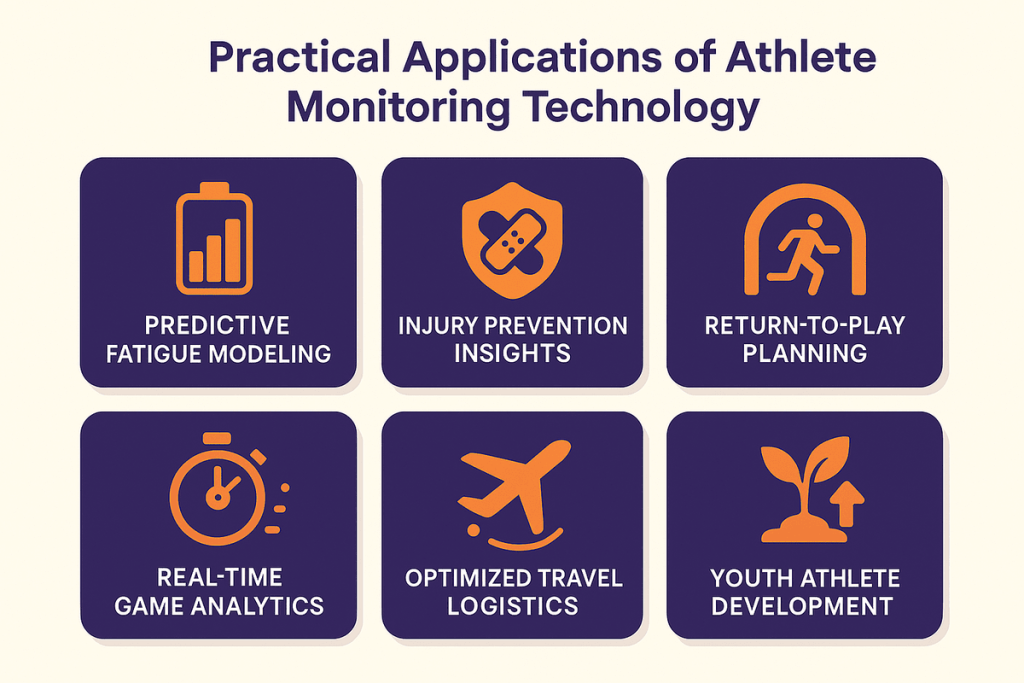
Predictive Fatigue Modelling
Through athlete monitoring systems, teams can now predict fatigue before it impacts performance. Using advanced algorithms and the Acute: Chronic Workload Ratio (ACWR), coaches assess when training loads exceed safe thresholds.
Machine learning models, which represent one of the key applications of predictive analytics in sports, combine wellness data, sleep quality, and past injury history to forecast individual risk levels. Real-time dashboards alert coaches when players approach critical fatigue points, enabling proactive load adjustments that prevent overtraining and injury.
Non-Contact Injury Prevention
Preventing soft-tissue injuries, such as hamstring strains and ACL tears, is a top priority. Athlete-monitoring devices, such as GPS trackers and force plates, detect imbalances, asymmetrical loading, or declining jump heights, early indicators of injury risk. By identifying these patterns, teams like Crystal Palace FC and the New Zealand All Blacks have successfully reduced injury rates and maintained higher player availability throughout demanding seasons.
Return to Play Planning
Data-driven rehabilitation ensures athletes return stronger, not sooner. Using athlete management software, coaches compare post-injury performance metrics such as sprint speeds, jump heights, or power outputs to pre-injury baselines. Recovery progressions are closely tracked, and load increases are made only when physiological markers indicate readiness, significantly reducing reinjury risk.
Real-Time Game Analysis
During competition, real-time analytics offer instant tactical feedback. GPS and tracking systems provide live updates on distance covered, sprint intensity, and heat maps of positioning. Coaches adjust substitutions or strategies on the fly to maintain intensity. The German national team’s 2014 World Cup victory famously leveraged such systems for optimal player rotation.
Optimise Team Travel Logistics
Travelling across time zones impacts recovery and readiness. Athlete monitoring data helps teams plan personalised recovery schedules post-travel, adjust training intensity, and manage circadian rhythm adaptation. These insights ensure athletes remain at peak performance regardless of travel demands.
Youth Athlete Monitoring and Scaling
For youth athletes, athlete monitoring systems promote safe, sustainable development. By tracking workload, growth, and biological maturity, coaches can tailor training intensity and recovery plans. Age-appropriate wellness surveys and education programs teach young athletes to understand their bodies and adopt lifelong self-monitoring habits, laying the foundation for future elite performance.
Athlete Monitoring vs. Simple Wearables – A Side-by-Side Comparison
While simple wearables track basic fitness metrics, an athlete monitoring system delivers a holistic, data-integrated approach powered by athlete monitoring technology and athlete management software, making it essential for professional performance optimisation and injury prevention.
| Feature | Athlete Monitoring Systems | Simple Wearable Devices |
| Purpose | Designed for comprehensive, data-driven athlete performance monitoring and team management | Primarily used for tracking basic health metrics like steps, heart rate, and sleep |
| Data Scope | Integrates internal and external load metrics, wellness indicators, and performance analytics | Focuses mainly on individual physical activity and daily wellness |
| Technology Integration | Combines GPS tracking, HRV sensors, biomechanical analysis, and athlete management software for advanced analytics | Uses built-in sensors and mobile apps with limited data depth |
| Analytics Capability | Employs AI and machine learning models for predictive fatigue, injury prevention, and real-time insights | Provides descriptive statistics and trend visualisation without predictive analytics |
| Customization Level | Fully customizable to sport type, position, and individual training goals | Minimal customisation options; same tracking format for all users |
| Team Collaboration | Enables centralised data sharing among coaches, trainers, and medical staff | Data typically stays with the individual and is rarely shared across teams |
| Reporting and Dashboards | Offers real-time dashboards, comparative analytics, and historical performance tracking | Generates standard reports through mobile apps without deeper analysis |
| Use Case | Ideal for professional teams, academies, and performance labs focused on data-driven training optimisation | Best for fitness enthusiasts tracking general activity and lifestyle health |
| Cost and Complexity | Higher cost and requires expert setup, but delivers comprehensive, actionable insights. | Affordable, easy to use, but limited in scope and precision |
Challenges and Limitations of Athlete Monitoring Technology
While athlete monitoring technology offers immense benefits for performance enhancement and injury prevention, implementing these systems isn’t without challenges. From data privacy compliance to managing overwhelming data volumes, organisations must address several critical issues to ensure success.
1. Data Privacy and Compliance
Athlete monitoring systems collect sensitive biometric, health, and performance data, making data privacy a top concern. Regulations like GDPR and HIPAA require strict adherence to consent, transparency, and secure data handling. Teams must clarify who can access specific data. Coaches may view performance metrics, while medical staff handle health records. Encryption, multi-factor authentication, and regular audits are essential for safeguarding athlete information.
2. Ensuring Data Accuracy
The effectiveness of athlete monitoring devices relies on data accuracy. Poor GPS signals, misplaced sensors, or inconsistent wear can distort results. Regular calibration, device validation studies, and athlete training on proper usage are necessary to maintain reliable data streams. Without accurate inputs, analytics can mislead rather than inform.
3. Coach and Athlete Buy-In
Even the most advanced athlete-monitoring systems fail when users resist adoption. Coaches and athletes must see clear benefits, whether in optimising performance or preventing injuries. Educating stakeholders, starting with a few key metrics, and integrating tools seamlessly into existing routines builds trust and long-term engagement.
4. High Technology Costs
The cost of athlete monitoring software and wearables can be prohibitive. GPS trackers, force plates, and analytics platforms require substantial investment. Smaller programs often begin with affordable tools like sRPE or wellness tracking before scaling to complete systems. Demonstrating ROI through improved performance and injury reduction helps justify these expenses.
5. Data Overload Management
Too much data can cause “analysis paralysis.” Successful teams focus on key performance indicators linked to specific goals. Automating alerts for anomalies and training staff in data literacy ensures insights drive action rather than confusion, keeping monitoring purposeful and efficient.
From implementation to optimization, Folio3 helps you design data-driven performance systems that scale across teams and seasons.
How to Choose the Right Athlete Monitoring Solution?
Selecting the right athlete monitoring solution is a strategic decision that can make or break your performance program. The ideal system should align with your goals, ensure data accuracy, integrate seamlessly with existing tools, and provide actionable insights rather than raw data overload.
Here’s how to make the right choice:
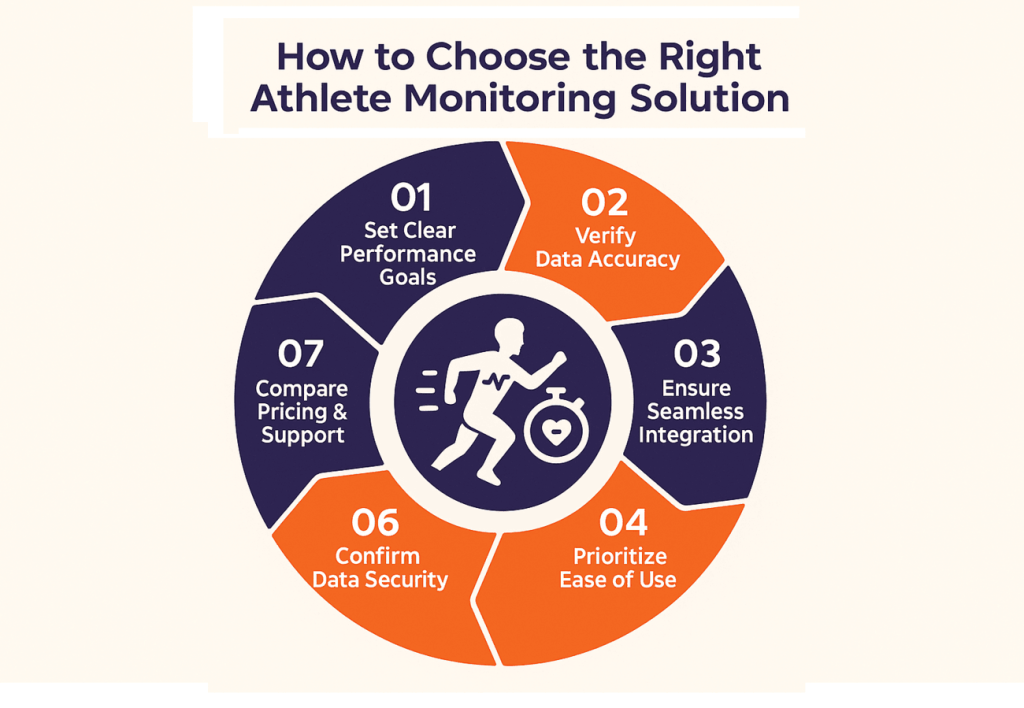
1. Define Performance Goals
Begin by outlining your primary objectives. Are you aiming to prevent injuries, optimise training, or improve recovery tracking? For instance, team sports may focus on GPS-based workload management, while strength and endurance sports prioritise force and cardiovascular metrics. Defining clear goals helps you choose the most suitable athlete-monitoring technology for your sport’s needs.
2. Evaluate Data Accuracy
Reliable decisions start with accurate data. Choose systems with peer-reviewed validation studies and proven accuracy under field conditions. While research-grade precision is ideal for labs, everyday training can tolerate minor variance if data trends remain consistent.
3. Check System Integration
A fragmented tech ecosystem wastes time. The best athlete monitoring software integrates GPS tracking, force plate data, and wellness assessments into one unified dashboard. Look for open APIs, cloud access, and export flexibility to avoid vendor lock-ins.
4. Assess Ease of Use
Ease of use determines adoption. Coaches need intuitive dashboards with actionable insights, while athletes require quick, mobile-friendly input options. Choose a platform offering onboarding, tutorials, and reliable support to minimise friction.
5. Review Analytics Capabilities
Advanced platforms go beyond tracking; they interpret. Opt for systems offering predictive analytics, trend visualisation, and customizable dashboards that align with your coaching methodology. Strong capabilities in sports data analytics enable teams to turn complex performance metrics into clear, actionable strategies that improve both training and recovery outcomes.
6. Ensure Data Security
With sensitive biometric data involved, data security and compliance (GDPR, HIPAA) are non-negotiable. Verify encryption standards, access controls, and clear data ownership policies before committing.
7. Compare Cost and Support
Factor in hardware, software, and support costs. Pilot programs can help test functionality and ROI before large-scale adoption. Ultimately, the right solution should balance accuracy, usability, and long-term value for your organisation.
Best Practices for Building a High-Performance Athlete Monitoring System
Building a high-performance athlete monitoring system requires more than just collecting data, but it demands a strategic, evidence-based approach that aligns technology, analytics, and people toward shared goals. Here’s how top sports organisations maximise the impact of athlete monitoring technology.
1. Establish Clear Data Goals
Before implementing technology, define what you want to achieve. Are you aiming to reduce injury rates, optimise recovery, or improve game-day readiness? Setting clear, measurable objectives helps identify the right metrics and ensures data drives tangible performance outcomes. Track progress by comparing results before and after data-driven interventions to evaluate effectiveness.
2. Select Validated Technology
Accuracy is non-negotiable. Choose validated monitoring tools backed by peer-reviewed research. Match your technology to sport-specific demands, such as GPS trackers for field sports, force plates for explosive movements, or heart rate variability (HRV) tools for endurance athletes. Reliable data forms the backbone of every performance decision.
3. Centralise Data Architecture
Integrate all performance data, GPS, wellness surveys, and testing results into a single, centralised athlete-monitoring platform. This unified view allows for pattern recognition and advanced analytics that fragmented systems simply can’t deliver. Use APIs and automated pipelines to maintain seamless data flow and reduce manual errors.
4. Provide Consistent Feedback
Feedback builds trust and compliance. Share easy-to-understand visuals, such as colour-coded recovery charts or load progression graphs. When athletes see how monitoring improves their training and recovery, engagement skyrockets. Feedback should always be timely, personalised, and actionable.
5. Train Staff on Data Interpretation
Even the most advanced system fails without data literacy. Educate coaches, trainers, and analysts to interpret metrics accurately and make evidence-based decisions. Regular workshops and clear decision frameworks (e.g., adjusting loads when wellness drops) ensure consistent responses across teams.
6. Focus on Key Metrics
Avoid information overload. Identify the most impactful performance indicators, typically 3–5 and refine them over time. Streamlining metrics keeps focus sharp and decisions data-driven, ensuring your athlete monitoring system delivers real, measurable results.
How Folio3 Enables Athlete Management Success?
Folio3, a leading sports analytics company, empowers sports organisations to fully leverage athlete monitoring systems through cutting-edge data solutions and advanced performance analytics. By integrating technology, AI, and cloud infrastructure, Folio3 helps teams optimise player development, prevent injuries, and drive long-term athletic success.
Custom Platform Development
Folio3 designs custom athlete management platforms tailored to each organisation’s unique goals. These platforms seamlessly integrate wearable data, GPS tracking, and performance analytics, providing a unified dashboard for coaches, analysts, and medical teams.
Advanced AI and Machine Learning Modelling
Through AI-driven predictive analytics, Folio3 enables real-time insights into fatigue, recovery, and injury risk. Machine learning algorithms identify performance trends, helping teams make proactive adjustments to maximize output while minimising overload.
Unified Data Governance
Folio3 ensures data accuracy, security, and compliance through centralised governance frameworks. All athlete data is protected by global privacy standards such as GDPR and HIPAA, ensuring responsible data use and transparency.
Real-Time Data Pipelines
With real-time data processing, teams gain immediate access to key performance metrics. Coaches and trainers can make data-backed decisions during training or live competition without delay.
Cloud Infrastructure Consulting
Folio3’s cloud consulting services deliver scalable, high-performance infrastructure for managing complex athlete datasets. From secure storage to seamless integration, Folio3’s solutions enable smarter, faster, and more efficient sports data management.
The Future Trends in Athlete Monitoring
As athlete monitoring technology continues to evolve, the next generation of systems will move beyond simple data collection toward proactive, intelligent performance optimisation. Future innovations will combine AI, edge computing, and biometric sensing to make monitoring smarter, faster, and more personalised than ever before.
AI-Driven Prescriptive Analytics
While today’s systems describe what happened, future AI-driven athlete monitoring systems will prescribe what to do next. These intelligent platforms will recommend training adjustments, nutrition plans, and recovery strategies tailored to each athlete’s physiological responses. With advancements in AI data extraction, coaches will be able to interpret complex biometric patterns more effectively, receiving clear, actionable insights such as “reduce intensity by 15% today” based on real-time data trends.
Edge Computing Integration
With edge computing, data will be processed directly on athlete monitoring devices, reducing lag and enabling instant feedback. Wearables will send haptic alerts when athletes exceed safe thresholds, helping them adjust their effort or technique immediately and enabling real-time decision-making.
Digital Twin Simulation
Digital twin models, virtual replicas of athletes, will allow coaches to simulate training scenarios before applying them in real life. These simulations will predict recovery timelines, performance outcomes, and adaptation potential, minimising risk while maximising efficiency.
Non-Invasive Biometric Sensors
Next-gen athlete monitoring technology will include clothing-embedded optical sensors that track hydration, lactate, and muscle oxygenation without blood draws. Sweat and breath analysis will provide continuous metabolic feedback, bridging lab-level precision with everyday training.
Hyper-Personalized Recovery
Future athlete management software will create dynamic recovery programs based on genetics, sleep, and real-time biomarkers. These systems will automate scheduling for rest, nutrition, and active recovery, ensuring athletes reach peak readiness while minimising injury risk.
Partner with Folio3 to turn raw data into actionable insights that drive measurable results on and off the field.
FAQs
What is athlete monitoring, and why is it important in sports performance?
Athlete monitoring is the systematic use of athlete monitoring systems to track training load, recovery, and performance data. It’s vital because it helps coaches make evidence-based decisions, prevent injuries, and personalise training for peak athletic performance.
What is the core function of an athlete monitoring system?
An athlete-monitoring system measures internal and external loads to manage training stress effectively. It analyses patterns over time and helps coaches adjust training intensity and recovery for optimal results.
How does athlete monitoring benefit ROI and athlete health?
Athlete monitoring technology reduces injuries, lowers medical costs, and improves training efficiency. By preventing overtraining and promoting recovery, it enhances ROI by improving player availability and extending athletic careers.
What are the biggest challenges to adoption?
Challenges include high costs, data privacy concerns, and resistance from traditional coaching cultures. Implementing athlete monitoring devices also requires proper data management and sports science expertise.
Which key athlete monitoring devices are essential?
Core athlete monitoring devices include GPS trackers, heart rate monitors, force plates, and sleep trackers. These tools measure both physical workload and recovery, giving a complete view of an athlete’s health.
What is the difference between internal and external load?
Internal load measures the body’s physiological response (like heart rate or exertion), while external load measures physical output (like distance or acceleration). Both are key metrics in athlete monitoring systems.
How does athlete management software help coaches?
Athlete management software consolidates performance data into one platform, automating analysis and reporting. It helps coaches track progress, detect fatigue, and make informed training decisions.
Can AI predict an athlete’s subsequent injury?
AI in athlete monitoring systems predicts injury risk by analysing training loads, wellness scores, and previous injuries. While not foolproof, it significantly improves proactive injury prevention.
Is athlete monitoring only for professional teams?
No, athlete monitoring technology is now accessible to college and youth teams. Affordable devices and cloud-based software make data-driven performance management possible at all levels.
How is data privacy handled in sports technology?
Modern athlete monitoring solutions ensure data privacy through encryption, consent-based data sharing, and compliance with regulations like GDPR. Secure access controls prevent misuse of sensitive information.
What is the Acute: Chronic Workload Ratio (ACWR)?
The ACWR metric compares short-term training load to long-term averages to identify injury risk. Maintaining a balanced ratio (0.8–1.3) helps optimise athlete performance while preventing overload.
Conclusion
Athlete monitoring has redefined modern sports by transforming intuition-driven coaching into a precise, data-driven science. From optimising training loads to preventing injuries, athlete monitoring systems empower teams to enhance performance and extend player longevity.As technology evolves, integrating AI, wearables, and predictive analytics will further revolutionise athlete management. Partnering with Folio3 Data Services can help organisations build custom athlete monitoring platforms, leverage advanced analytics, and harness real-time data pipelines for smarter, evidence-based performance management.
